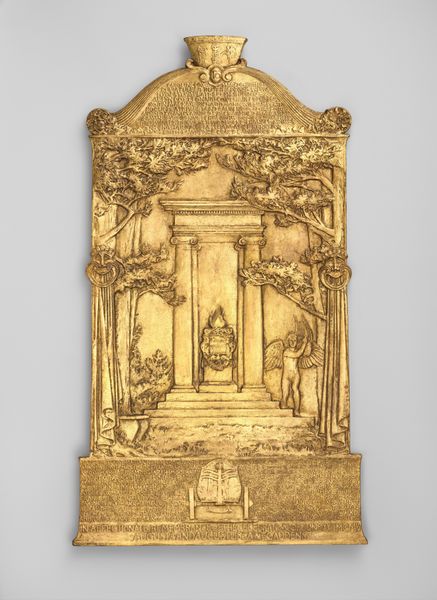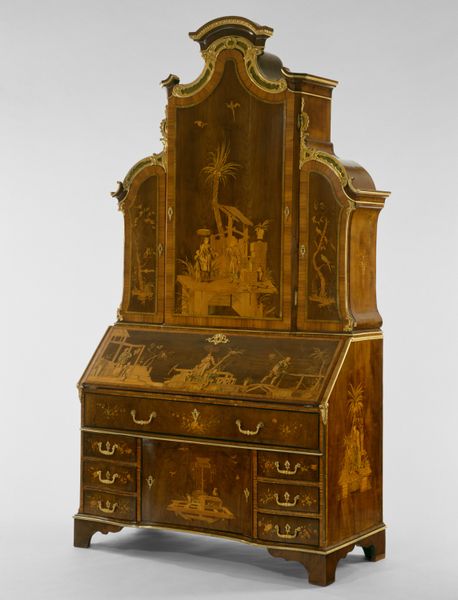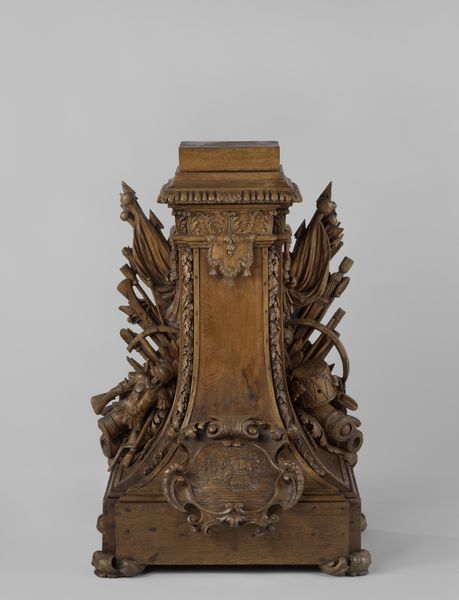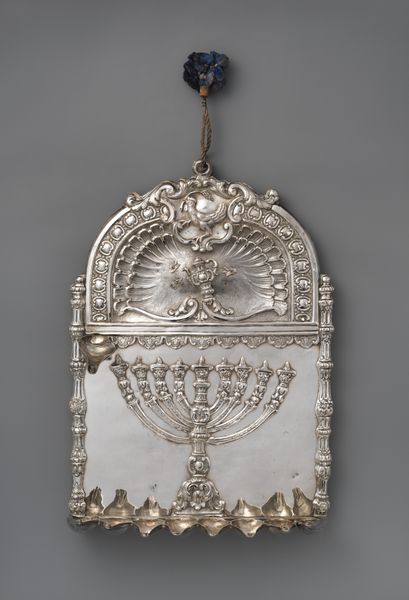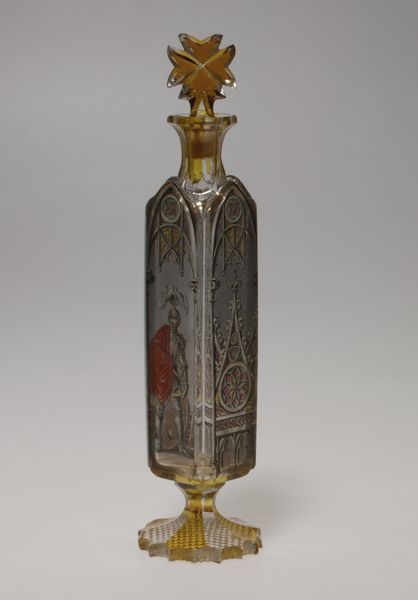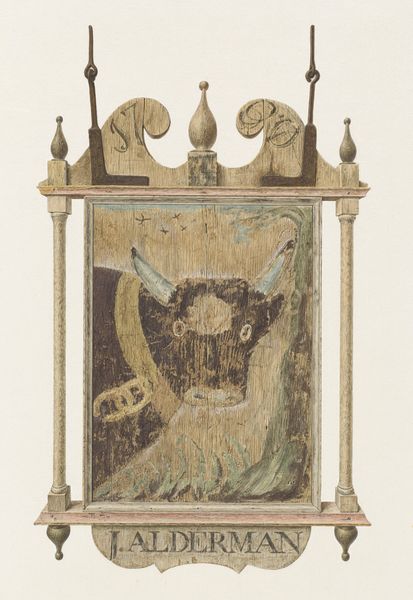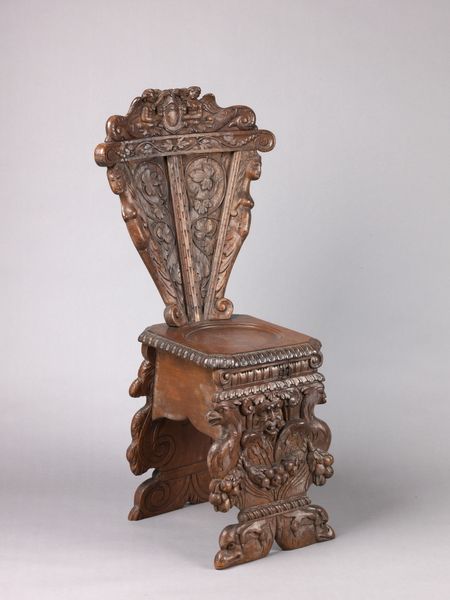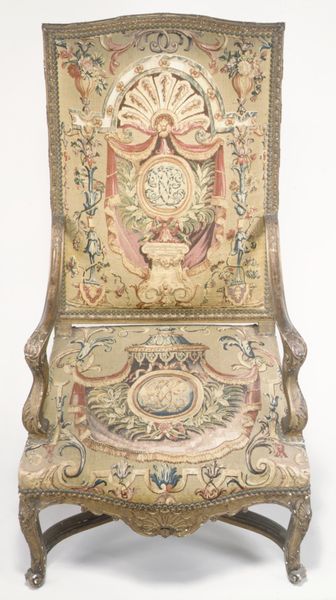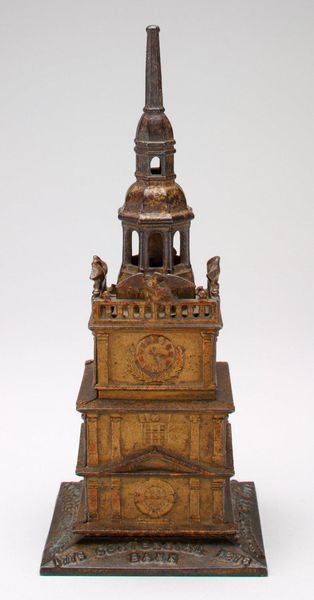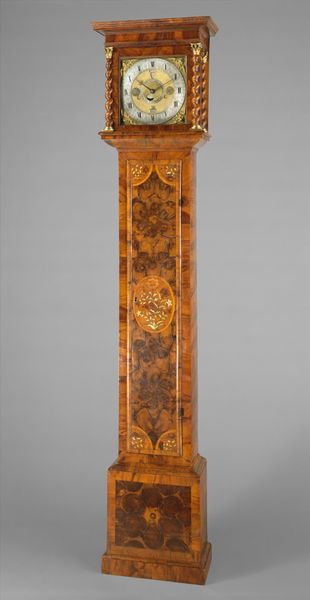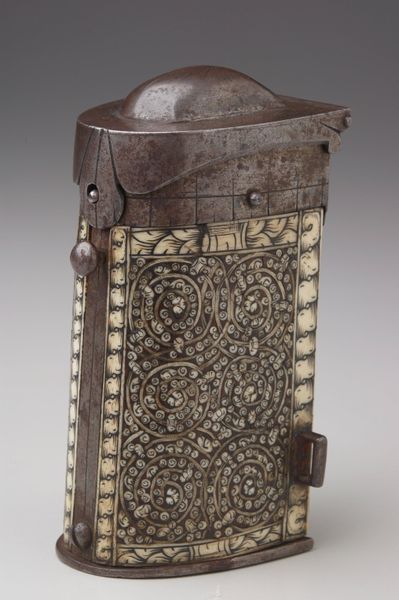
painting, oil-paint, sculpture, wood, pendant
#
folk-art
#
painting
#
oil-paint
#
sculpture
#
sculpture
#
united-states
#
neutral brown palette
#
wood
#
decorative-art
#
pendant
Dimensions: 142.2 × 79.7 × 5.1 cm (56 × 31 3/8 × 2 in.)
Copyright: Public Domain
Curator: Looking at this piece, I'm immediately struck by its simplicity and almost ghostly appearance. The colors are so muted, verging on monochromatic. Editor: That's "Tavern Sign: Arnold's Inn," dating back to the 18th century, currently housed at the Art Institute of Chicago. Attributing it to a specific artist remains a challenge, but its existence speaks volumes about community life in early America. Curator: Community life…exactly! I imagine this sign not merely as decor but as an announcement of a space, very possibly of gathering and commerce, possibly one for radical conversations. What do you notice about the rendering of the lion? Editor: Well, the lion certainly dominates the composition. The artist's technique—oil on wood—lends it a fascinating tactile quality. Notice how the form isn’t anatomically accurate; rather, it’s imbued with a folksy charm. This is far removed from academic renderings of animals. Curator: Right, we’re far away from Europe now. What's more significant is the symbolism of the lion itself. For some, the lion might project authority and power. But for marginalized groups, its power might also have come to represent tyranny. Editor: Perhaps, but there's also the visual weight given to the text at the bottom—it anchors the composition and announces its intent. The contrast between the faded grandeur of the lion and the blunt functionality of the lettering creates an interesting tension. It suggests the simultaneous embrace of symbolism and the need for practicality. Curator: Absolutely. Tavern culture fostered distinct communities. I'm interested in considering who this sign served, and who felt welcome underneath it. I want to hear from historians of sexuality and race. What stories could be unlocked through the intersectional examination of those narratives? Editor: Your call to unearth narratives and dialogues underscores what objects can elicit. This piece is beautiful because of the simple yet compelling interaction between form, surface, and history. Curator: Indeed, engaging with it has given me new avenues to explore regarding social networks, especially in spaces that fostered public discourse.
Comments
No comments
Be the first to comment and join the conversation on the ultimate creative platform.
